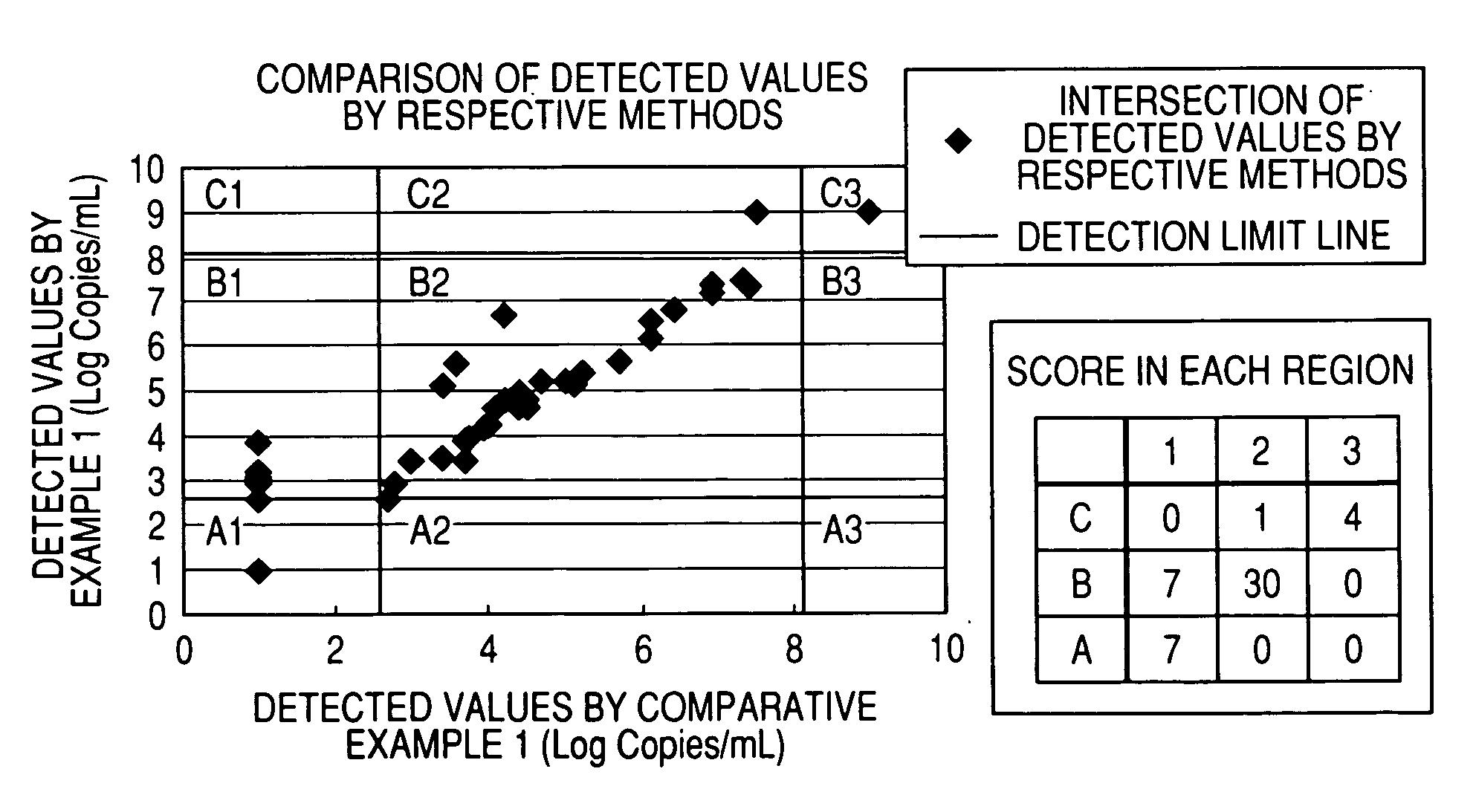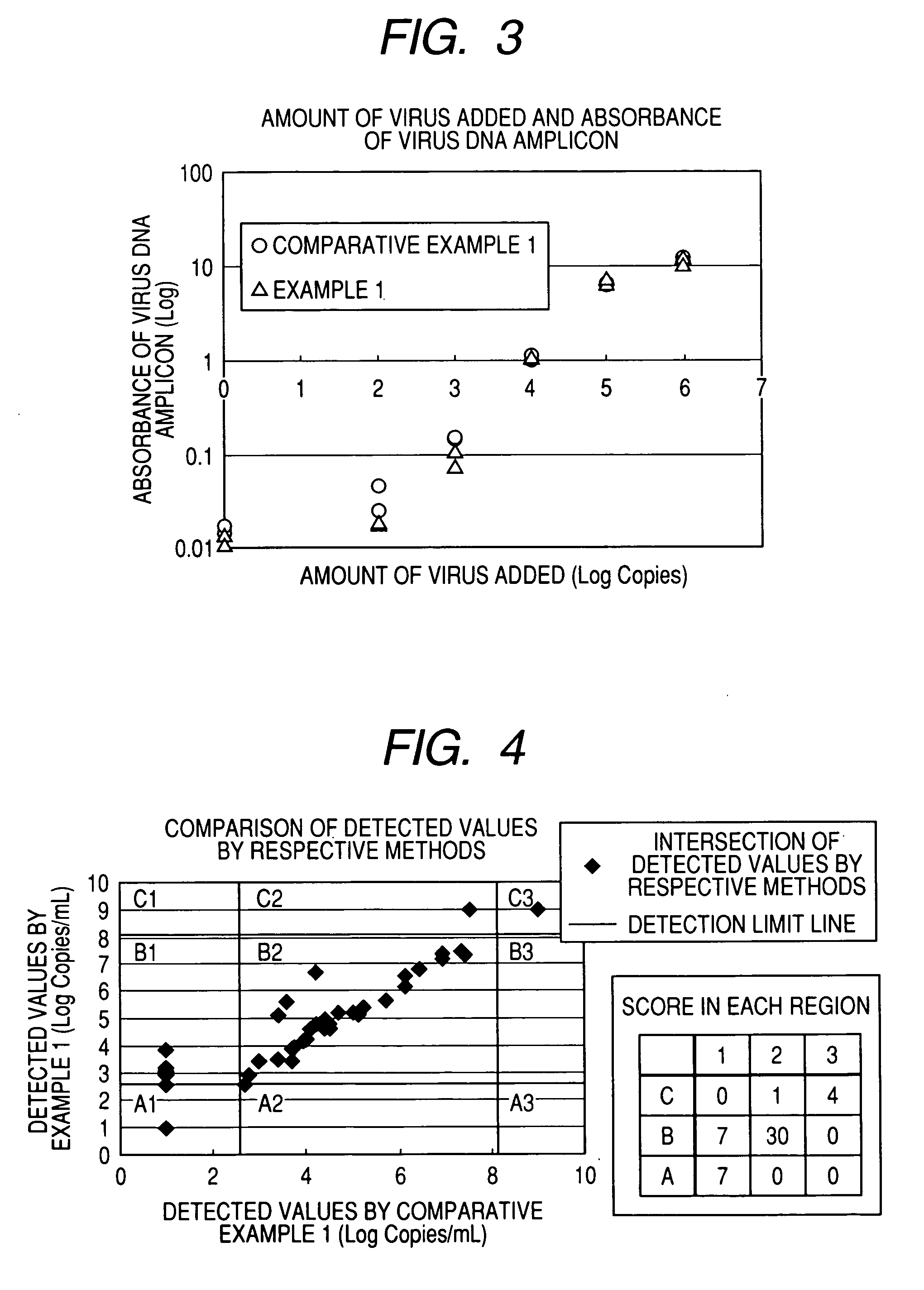Water-soluble cationic magnetic fine particles and method for separating or detecting lipid vesicle using the same
a technology of lipid vesicles, which is applied in the field of water-soluble cationic magnetic fine particles, can solve the problems of prolonged processing time, complex and laborious pretreatment of blood samples, and inability to detect the inhibiting causative substances, so as to reduce the detection of any inhibiting causative substances and facilitate and short-term processing
- Summary
- Abstract
- Description
- Claims
- Application Information
AI Technical Summary
Benefits of technology
Problems solved by technology
Method used
Image
Examples
example 1
[0198] HBV positive human normal plasma (50 μL) and an aqueous magnetic beads solution (10 μL) were added to a 1.5 mL screw-cap tube and the whole was stirred for 30 seconds using a vortex mixer. The masking agent 1 (20 μL) was added thereto, followed by stirring for 2 minutes using a vortex mixer. Then, an aggregating agent (40 μL) was added thereto and the whole was stirred for 30 seconds using a vortex mixer to form an aggregate. Magnetic separation was conducted under conditions of neodymium magnet and 5 minutes to form pellets at side surface of the screw-cap tube. The supernatant was carefully removed using a pipette. Ampdirect (manufactured by Shimadzu Corporation, 50 μL) was added to the resultant pellets and the whole was stirred for 30 seconds using a vortex mixer to homogeneously disperse the pellets. The screw-cap tube was placed on a heat block (manufactured by Taitec, for a 1.5 mL screw-cap tube), heated for 5 minutes, and then cooled to room temperature. The above the...
example 2
Collection of Hepatitis B Virus by Polyethyleneimine-Immobilized Dextran-Coated Magnetic Fine Particles
[0215] 1) The magnet unit of an automatic nucleic acid-extracting apparatus MP12 (manufactured by Precision System Science) was replaced by a magnet unit where 13 pieces of a magnet of 28 mm×4 mm×8 mm obtained by stacking 7 pieces of a square neodymium magnet of 4 mm×4 mm×8 mm were mounted in series. [0216] 2) The polyethyleneimine-immobilized dextran-coated magnetic fine particles (0.75% by weight, 10 μL) were placed in the second lane of a reaction tray of MP12. [0217] 3) A 0.25% physiological saline solution (20 μL) of polyacrylic acid is placed in the third lane of a reaction tray of MP12. [0218] 4) An aqueous polyethylene glycol solution for aggregation (40 μL) is placed in the fourth lane of a reaction tray of MP12. [0219] 5) An aqueous polyethylene glycol solution for washing (150 μL) is placed in the fifth lane of a reaction tray of MP12. [0220] 6) Ampdirect (trade name, ...
PUM
 Login to View More
Login to View More Abstract
Description
Claims
Application Information
 Login to View More
Login to View More - R&D
- Intellectual Property
- Life Sciences
- Materials
- Tech Scout
- Unparalleled Data Quality
- Higher Quality Content
- 60% Fewer Hallucinations
Browse by: Latest US Patents, China's latest patents, Technical Efficacy Thesaurus, Application Domain, Technology Topic, Popular Technical Reports.
© 2025 PatSnap. All rights reserved.Legal|Privacy policy|Modern Slavery Act Transparency Statement|Sitemap|About US| Contact US: help@patsnap.com



